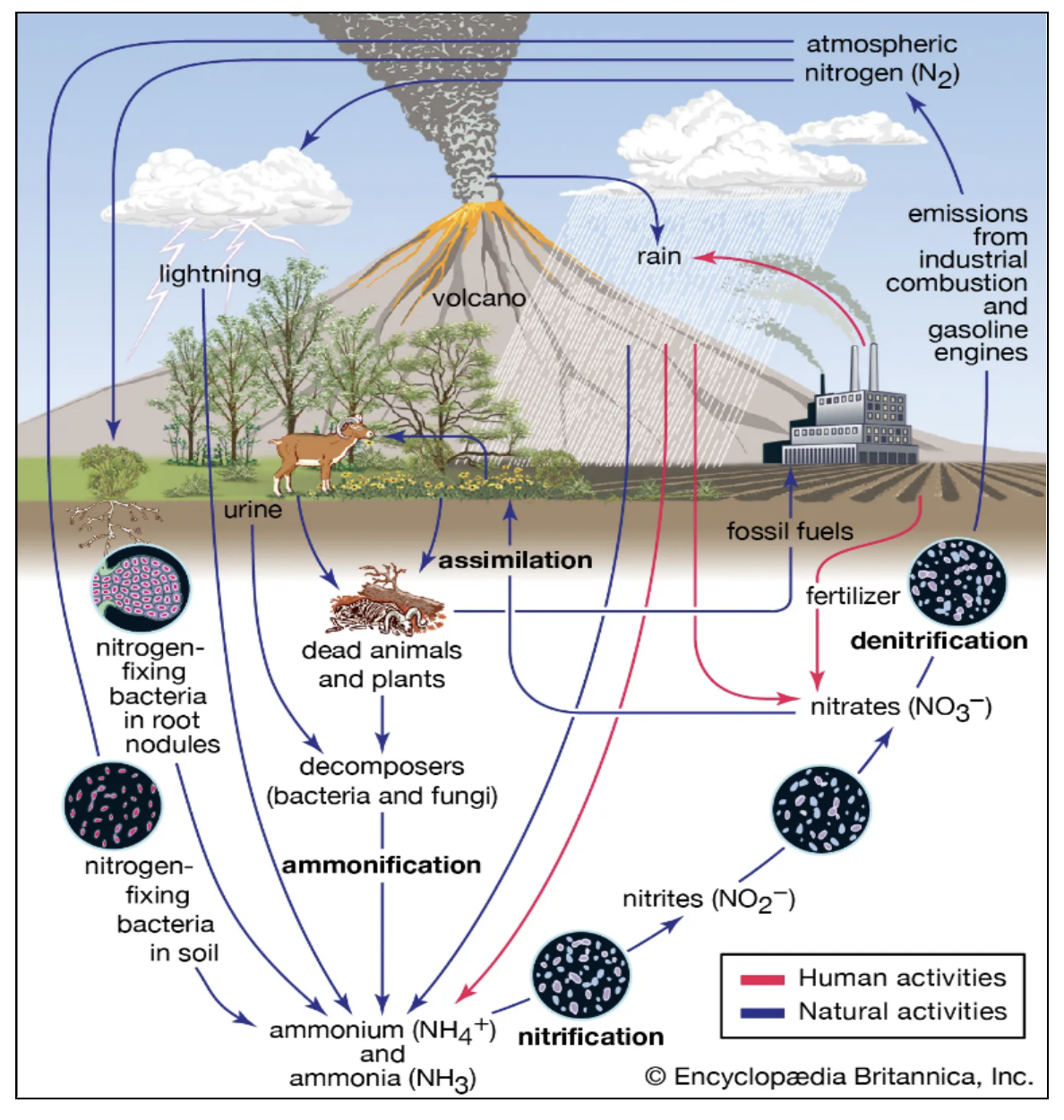News Excerpt:
India ranks as the second-largest emitter of nitrous oxide (N2O) globally, a greenhouse gas significantly more potent than carbon dioxide in terms of atmospheric heating.
Key points from the Study:
The study was published on global assessment of N2O emissions in the Journal Earth System Science Data.
- In 2020, India accounted for nearly 11% of global man-made N2O emissions, second only to China, which contributed 16%.
- Atmospheric N2O concentrations reached 336 parts per billion in 2022, about 25% higher than pre-industrial levels.In contrast, carbon dioxide levels were 417 parts per million, making carbon dioxide emissions a more immediate focus for climate change mitigation.
|
Top five emitter countries of N2O |
|
|
China |
16.7% |
|
India |
10.9% |
|
United States |
5.7% |
|
Brazil |
5.3% |
|
Russia |
4.6% |

Primary source of emissions
- Human activities have driven a 40% increase in N2O emissions over the past four decades, with the rate of increase from 2020 to 2022 being the highest since measurements began in 1980.Agricultural activities, particularly the use of nitrogen fertilizers and animal manure, accounted for 74% of total anthropogenic N2O emissions in the last decade.
- While agricultural emissions continue to grow, emissions from other sectors like fossil fuels and the chemical industry are stable or declining globally.
- However, emissions from aquaculture, though currently only a tenth of those from land-based fertilizers, are growing rapidly.
Impact of emission
- N2O persists in the atmosphere for approximately 117 years, leading to long-term climate and ozone impacts.
- These emissions contribute to 6.4% of the effective radiative forcing of greenhouse gases, adding approximately 0.1°C to current global warming.
- According to the study, "The observed atmospheric N2O concentrations over the last ten years have surpassed the most pessimistic, illustrative future greenhouse gas trajectories used by the Intergovernmental Panel on Climate Change (IPCC), which lead to global mean temperatures well above 3°C by the end of this century”.
- In order to achieve net-zero emission paths that align with the Paris Agreement and stabilize global temperatures below 2°C from pre-industrial levels, there must be a minimum 20% decrease in anthropogenic N2O emissions by 2050 as compared to 2019 levels.
Changing Food patterns
- The rising demand for meat and dairy products has increased manure production and subsequent N2O emissions. Moreover, nitrogen fertilizers used in animal feed production contribute to the rise in emissions.
Way Forward:
- Director of the Centre of Sustainable Agriculture, emphasized the urgency of addressing this issue, noting that India heavily subsidizes nitrogen fertilizers by over 80%.
- He called for a re-evaluation of fertilizer subsidies to support alternative production systems that would reduce both emissions and water pollution.
|
Intergovernmental Panel on Climate Change (IPCC)
|
|
Paris Agreement
|


